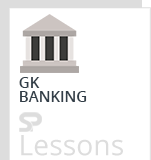 Introduction
Introduction
IBPS PO 2019 – Main Examination, conducted in online Mode, has: a duration of 3 hours, 4 Sections, a total of 155 questions, a Maximum score of 200 marks, and, is followed by a Descriptive Test (English language) for a duration of 30 minutes. The 4 Sections are timed: Reasoning & Computer Aptitude, General/ Economy/ Banking Awareness, English language, Data Analysis & Interpretation. The section wise details are as shown below. The objective test is followed by a Descriptive Paper (Essay Writing + Letter Writing)
 Pattern
Pattern
| S.No. | Name of Test (NOT BY SEQUENCE) | No. of Questions | Maximum Marks | Medium of Exam | Time Allotted for Each Test (Separately Timed) |
|---|---|---|---|---|---|
| 1 | Reasoning & Computer Aptitude | 45 | 60 | English & Hindi | 60 minutes |
| 2 | General/Economy/Banking Awareness | 40 | 40 | English & Hindi | 35 minutes |
| 3 | English Language | 35 | 40 | English | 40 minutes |
| 4 | Data Analysis and Interpretation | 35 | 60 | English & Hindi | 45 minutes |
| TOTAL | 155 | 200 | 3 hours | ||
| 5 | English Language (Letter Writing & Essay) | 2 | 25 | English | 30 minutes |
 Syllabus
Syllabus
Syllabus - IBPS PO General Awareness/Economy/Banking Awareness - Main Examination
| S.No. | Topics |
|---|---|
| 1 | Banking and Insurance Awareness |
| 2 | Financial Awareness |
| 3 | Govt. Schemes and Policies |
| 4 | Current Affairs |
| 5 | Static GK |
 Quiz
Quiz
1. Planning for Retirement Saving is a type of
- A. Banking Option
B. Stock Market Option
C. Branding
D. Financial Planning
- A. FDI
B. Interest payments received by government
C. External Commercial Borrowings
D. FII
- A. Post Dated Demand Draft
B.Term Draft
C. Time Draft
D. Ante Dated Demand Draft
- A. RBI advances money to Government whenever there is any emergency
B. Commercial banks has to keep their funds with the RBI
C. It comes to help banks in times of crisis
D. All of the above
- A. Rs. 20 Lakhs
B. Rs. 5 Lakhs
C. Rs. 10 Lakhs
D. Rs. 15 Lakh
1. Which of the following banks has extended the Rs 4,100 crore loan for Visakhapatnam (VIZAG) Metro Rail project in Andhra Pradesh?
- A. ICICI Bank
B. HDFC Bank
C. Korea Exim Bank
D. Central Bank of India
- A. Close to Rs. 1 lakh crore
B. Close to Rs. 2 lakh crore
C. Close to Rs. 3 lakh crore
D. Close to Rs. 4 lakh crore
- A. Paytm Money app
B. FINO Money app
C. Airtel Money App
D. JIO Money App
- A. 2000 Rupees
B. 500 Rupees
C. 100 Rupees
D. 50 Rupees
- A. Bank of Baroda
B. Bank of India
C. Corporation Bank
D. Punjab National Bank
1. Economic units whose consumption and planned investments are less than their income is known as?
- A. Deficit Spending Economic Unit
B. Surplus Spending Economic Unit
C. Neutral Spending Economic Unit
D. Forced Spending Economic Unit
- A. Ministry of Finance
B. Central Statistics Office
C. Reserve Bank of India
D. State Bank of India
- A. Repo Auction
B. CRR
C. SLR
D. T-Bills
- A. econdary Market
B. Primary Market
C. Tertiary Market
D. Call Market
- A. RBI
B. IRDAI
C. SEBI
D. NHB



